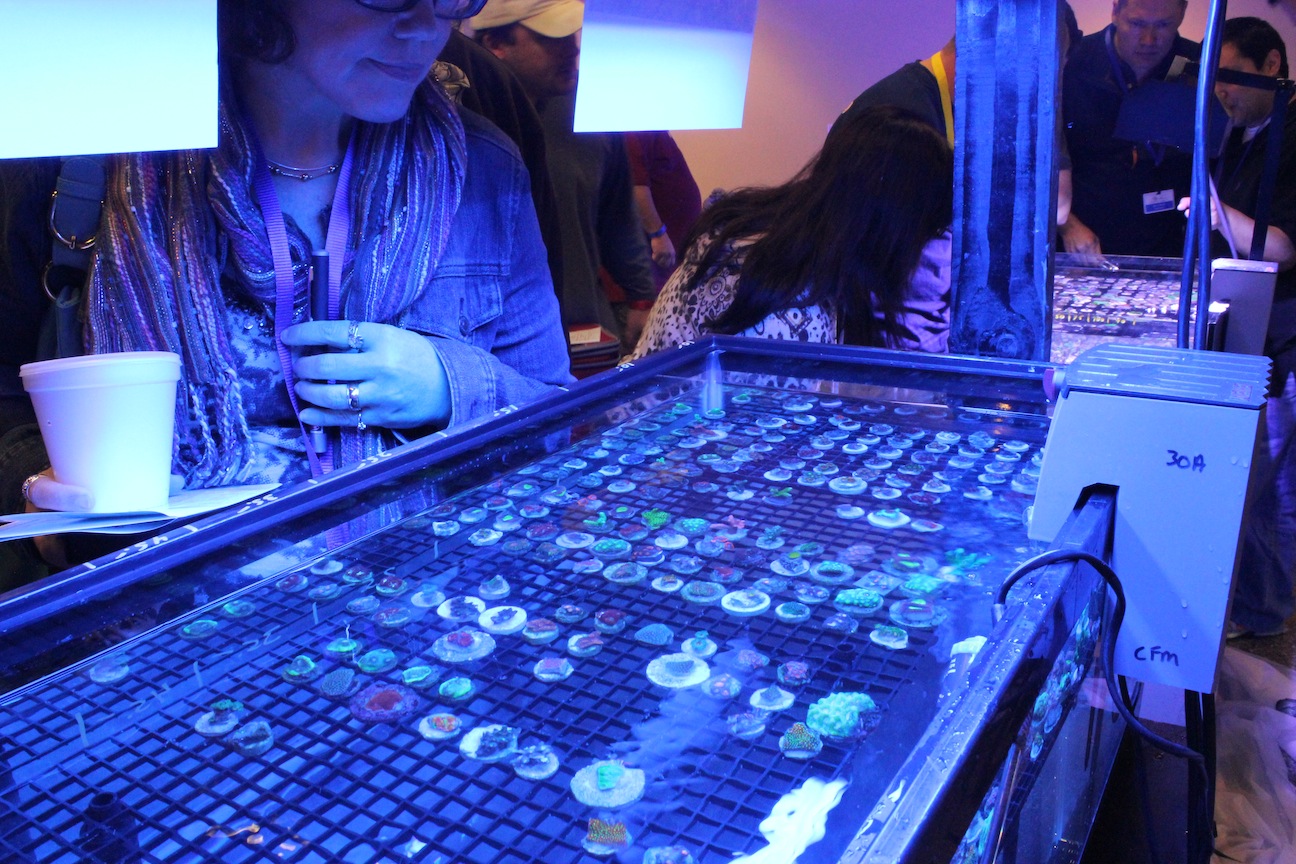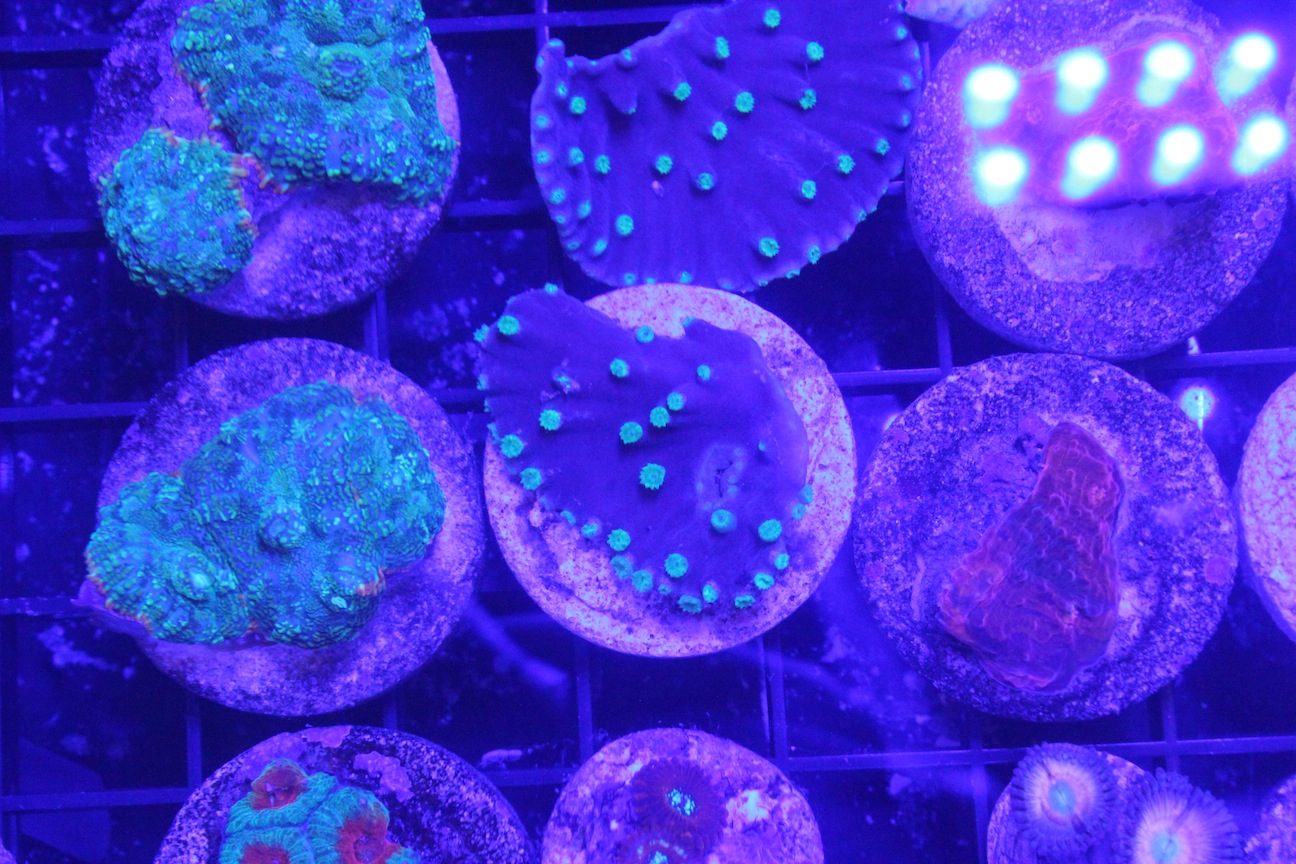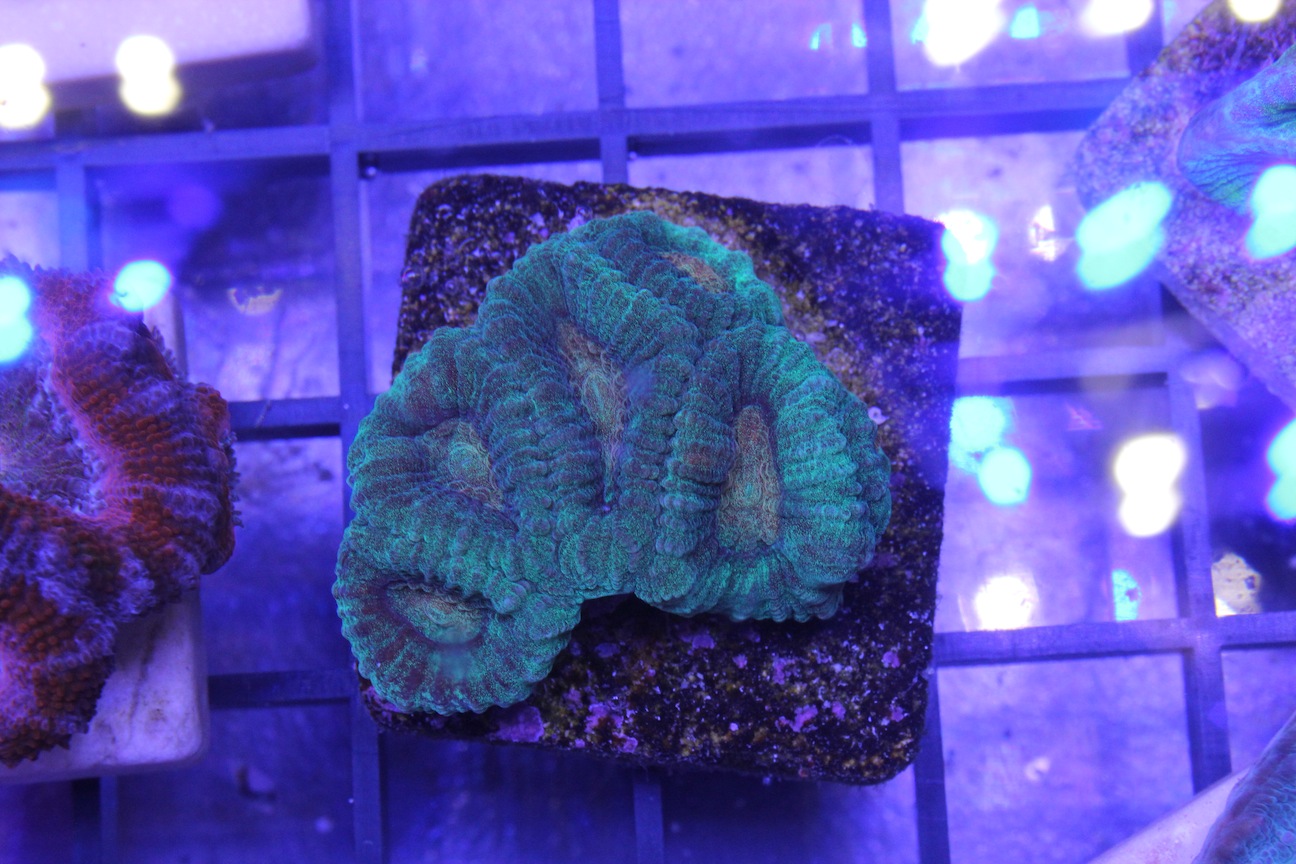
A couple of days ago, we posted an image of a rather astonishing dark blue plate coral that was being shown off by an online vendor. While the coral was unique in its own right, its colors were definitely being enhanced by intense actinic blue lighting. This enhancement was evident by glowing tentacles on the coral, as well as a blue hue being cast on the black eggcrate below it. That didn’t stop us from drooling all over the plate coral, which was not for sale by the way, but the image did draw some critical comments. Readers on our Facebook page expressed a bit of disgust and raised concerns about ethics regarding coral vendors who sell their products with images of severely color enhanced individuals, whether the enhancement be by lighting effects or image post-processing (via Photoshop or some other platform). On top of that, a blog post was created on the New Age Reefs community expressing those same concerns. In light of those comments and the growing trend of using intense blue and actinic lighting, we decided to also explore the ethics of coral color enhancing.
To solidify our standpoint, we generally do not approve of corals that have been photographically enhanced or placed under heavy actinic light simply to be sold online or at fish stores. Do we feel this practice is deceptive? Well, the answer is both yes and no, as it depends on what method of enhancement we are talking about and what purpose the image serves. If a company is enhancing a photo of a coral that they are not selling but merely showing off, for example corals being part of their private collection like the blue plate mentioned above, then no, there is not much of an issue. All of that changes however, if the coral is being sold. At that point, we have to determine how far the deception goes.
If a coral vendor uses a blue light over their tanks at their store or a booth at one of the many trade shows that permeate this fine hobby, then the responsibility falls on the customer. It’s plainly obvious when a blue light is being used over a shallow tank. Even if you can’t tell just by looking at the coral, just tilt your head back and gaze at the hardware. Chances are the light will be predominantly blue, and at that point you can either choose to purchase the coral anyways or ask to see it under more typical aquarium conditions to help make the decision a little easier.
The real deception occurs when vendors use photo editing software or blue lighting to enhance their coral color for online sales without mention of the method used. Some reputable companies do edit their photos and/or use blue lighting, but they often make this information well known to their customers. This is usually accomplished by a tagline of “This coral was photographed under 20K metal halide lights”, or something along those lines on the page or some other visible space on the website. This practice is acceptable so long as it is fully disclosed to the customer before the purchase has been made. Unfortunately though, this isn’t always the case. A reef aquarium hobbyist jumps onto a website recommended by a friend or randomly discovered online, and there’s no mention of lighting or photographic techniques used. The coral purchase is based exclusively on the image shown on the page, and the hobbyist is often quite disappointed when it doesn’t look anything like the image shown once in their tank. Sure, you could chalk up some color loss to shipping stress and different water parameters that no doubt exist, but rarely will a coral ever look like it did online. This experience often leaves a bad taste in the customer’s mouth, and they take to the aquarium forum world for a little comfort and support.
So, with all that said, how does one go about purchasing corals that look the same both the vendor’s and your aquarium? For starters, look for tell-tale signs in each of the photographs. Do you see a blue hue cast over the eggcrate? Do the rock have an unusually blue appearance? If so, chances are the coral color is being artifically enhanced for the photograph. The goal here is to be vigilent and pay attention to the signs, that way you won’t get suckered into buying a coral that looks completely different under different lighting. If you find a coral you really like but are afraid of the blue light, ask for an image of the coral under different lighting conditions.
But what about “photoshopped” corals? Those are far trickier to pick out, as the blue hue is us
ually absent from the photos, and coral sellers don’t often like to admit their photos have been enhanced. Our only real answer is that if the coral appears too good to be true, then it probably is doctored. This statement can’t be applied to all images of amazing livestock of course, but you have to assume that the coral pictured may not look like that in your own tank. You can reverse photoshop the coral image by using software to reduce color saturation and remove the blue, or you could always ask the vendor if they ehance their images. Unfortunately though, this may not always lead to an honest or believable answer.
To reiterate our point, we do not support the use of photoshop or special lighting effects for coral sales. If you have an amazing coral, let its colors speak for themselves. Otherwise, your antics will likely catch up to you and hobbyists will realize what deceptive practices you are using.








Pingback: The AquaNerd Weekly Recap | AquaNerd()